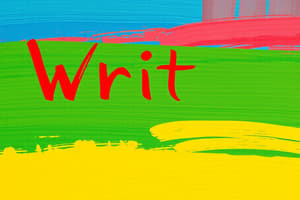Podcast
Questions and Answers
Which rhetorical device involves the repetition of the last word of a clause at the beginning of the next?
Which rhetorical device involves the repetition of the last word of a clause at the beginning of the next?
- Anadiplosis (correct)
- Anaphora
- Alliteration
- Conduplicatio
Which type of bias involves presenting information from a limited viewpoint or using stereotypes?
Which type of bias involves presenting information from a limited viewpoint or using stereotypes?
- Implicit bias (correct)
- Bias by omission
- Bias by commission
- Explicit bias
What is the primary purpose of using an analogy in writing or speech?
What is the primary purpose of using an analogy in writing or speech?
- To create a rhythmic pattern in the text.
- To offer a personal anecdote.
- To provide a contrasting viewpoint.
- To explain an unfamiliar concept by comparing it to something familiar. (correct)
Which rhetorical device is characterized by the repetition of a word or phrase at the beginning of successive clauses or sentences?
Which rhetorical device is characterized by the repetition of a word or phrase at the beginning of successive clauses or sentences?
How does amplification function as a rhetorical device?
How does amplification function as a rhetorical device?
Which rhetorical device relies on the use of contrasting language to highlight the differences between two opposing ideas?
Which rhetorical device relies on the use of contrasting language to highlight the differences between two opposing ideas?
What distinguishes 'bias by omission' from other forms of bias?
What distinguishes 'bias by omission' from other forms of bias?
What is the effect of using parallelism in writing?
What is the effect of using parallelism in writing?
How does 'conduplicatio' differ from 'anadiplosis' in its application?
How does 'conduplicatio' differ from 'anadiplosis' in its application?
What is the primary function of a rhetorical question?
What is the primary function of a rhetorical question?
How do connotation and denotation differ in defining a word's meaning?
How do connotation and denotation differ in defining a word's meaning?
In what way does satire function as a rhetorical device?
In what way does satire function as a rhetorical device?
What role does 'allusion' play in rhetoric?
What role does 'allusion' play in rhetoric?
How do reversals enhance a sentence's memorability?
How do reversals enhance a sentence's memorability?
What is the key characteristic of 'bias by commission'?
What is the key characteristic of 'bias by commission'?
What is the primary effect of using figurative language?
What is the primary effect of using figurative language?
What is the distinguishing characteristic of explicit bias?
What is the distinguishing characteristic of explicit bias?
How does alliteration contribute to a text's impact?
How does alliteration contribute to a text's impact?
Which statement best describes the purpose of an anecdote?
Which statement best describes the purpose of an anecdote?
How does the use of reversals specifically affect a sentence?
How does the use of reversals specifically affect a sentence?
Flashcards
Alliteration
Alliteration
Repetition of the same consonant sound at the beginning of closely connected words.
Allusion
Allusion
A reference to a historical, mythological, or literary person, place, or event.
Amplification
Amplification
Repeating a point with greater emphasis, detail, or explanation.
Anadiplosis
Anadiplosis
Signup and view all the flashcards
Analogy
Analogy
Signup and view all the flashcards
Anaphora
Anaphora
Signup and view all the flashcards
Antithesis
Antithesis
Signup and view all the flashcards
Bias
Bias
Signup and view all the flashcards
Bias by omission
Bias by omission
Signup and view all the flashcards
Bias by commission
Bias by commission
Signup and view all the flashcards
Implicit bias
Implicit bias
Signup and view all the flashcards
Explicit bias
Explicit bias
Signup and view all the flashcards
Conduplicatio
Conduplicatio
Signup and view all the flashcards
Connotation
Connotation
Signup and view all the flashcards
Denotation
Denotation
Signup and view all the flashcards
Figurative Language
Figurative Language
Signup and view all the flashcards
Parallelism
Parallelism
Signup and view all the flashcards
Reversals
Reversals
Signup and view all the flashcards
Rhetorical Question
Rhetorical Question
Signup and view all the flashcards
Satire
Satire
Signup and view all the flashcards
Study Notes
- Rhetorical devices are techniques used to effectively convey meaning and persuade an audience.
Alliteration
- The repetition of the same consonant sound at the beginning of closely connected words.
Allusion
- An indirect reference to a person, place, event, or thing from history, mythology, or literature.
Amplification
- A writing technique where a point is made and then repeated with greater emphasis, detail, or explanation.
- For example: "love, real love, takes time."
Anadiplosis
- The repetition of the last word of a preceding clause at the beginning of the next.
Analogy
- Comparison of a well-known concept to a lesser-known one to aid understanding.
Anaphora
- The repetition of a word or phrase at the beginning of successive lines or clauses.
Anecdote
- A brief, true, and amusing or interesting story.
Antithesis
- The use of contrasting language to emphasize the difference between two opposing ideas or things.
Bias
- A strong opinion or influence favoring one side of an argument or one item in a group.
- Bias by omission: Leaving out information about a group during its description.
- Bias by commission: Highlighting particular qualities to define or separate a group or person.
- Implicit bias: Presenting material from a limited viewpoint or using stereotypes.
- Explicit bias: Presenting a prejudiced view of events, individuals, or groups.
Conduplicatio
- The repetition of a word or phrase in various positions throughout a series of sentences or phrases.
Connotation
- The implied or associated meaning of a word, based on personal feelings.
Denotation
- The literal definition of a word.
Figurative Language
- Language used to create images or evoke memories in the reader's mind.
Parallelism
- The repetition of specific words, phrases, or clauses in a series to emphasize and make key words memorable.
- Parallel ideas should be expressed in parallel form.
Reversals
- Rearranging the words in a balanced sentence in reverse order to make it more memorable.
Rhetorical Question
- A question asked for effect, where the answer is either known or implied.
Satire
- The use of ridicule, irony, or sarcasm to critique people's hypocrisy or foolishness.
Studying That Suits You
Use AI to generate personalized quizzes and flashcards to suit your learning preferences.



